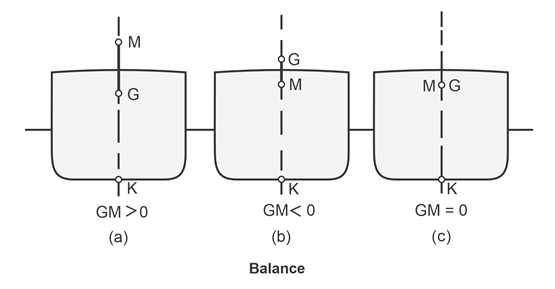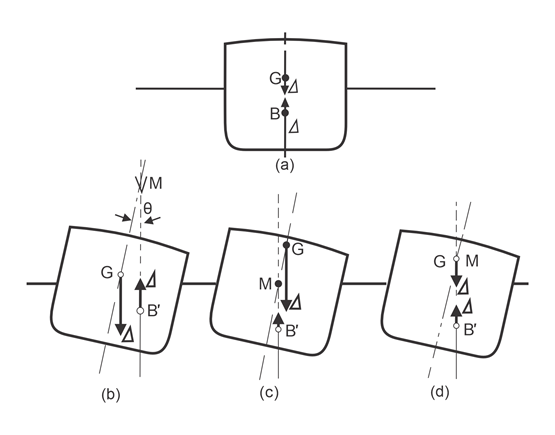|
Stability is the ability of the ship to return to its equilibrium position, by removing the external force that had separated it from it. To limit the scope of this definition, the ship
is considered stationary and the movement produced by the external force is small.
For balance to exist, the following two conditions must be met:
- Displacement or load must be equal to thrust.
- The center of gravity of the ship and the center of gravity of the hull underbody must be in the same vertical.
Let's remember Archimedes' principle: Every body totally or partially submerged in a liquid receives from it a force called (thrust), from bottom to top, equal to the weight of the
volume of liquid displaced.

Following the given definition of stability, the balance of the ship can be stable or not stable. That is to say, either the ship has the capacity to recover the initial equilibrium
position, therefore it will be stable. Otherwise, if it doesn't have this capability then it will be unstable. Within the non-stable equilibrium there is room for the typical names of
indifferent and unstable equilibrium.
The balance of a body can be of three kinds:
- Stable: when the body is slightly removed from its equilibrium position, it tends to return to it;
- Unstable: as the body is moved slightly away from its equilibrium position, it tends to continue moving away;
- Indifferent: as the body is moved slightly away from its equilibrium position, it remains in equilibrium in the new position.

In conclusion, the balance of the ship can be studied by simply analyzing the relative position of two independent points; M (transverse metacenter) and G (center of gravity).
|